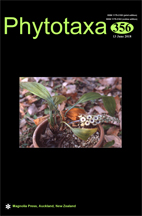Abstract
The present revision focuses on the enigmatic Southwest Asian genus Aethionema in Iran based on taxonomic literature, fieldwork, and study of over 400 herbarium specimens. As a result of the present study, A. diastrophis and A. transhyrcanum are newly found for Iran. The former is morphologically closer to A. membranaceum and A. kopetdaghi rather than to A. spinosum, under which it was previously synonymized. Aethionema edentulum and A. levandowskyi are placed in the synonymy of A. membranaceum and A. grandiflorum, respectively. The genus is represented in Iran by 16 species, of which six are endemic. Detailed descriptions, distribution maps, IUCN conservation status assessments, and illustrations of the species are provided. The lectotypes of A. cordatum, A. elongatum, A. fimbriatum, A. grandiflorum, A. koenigii, A. moricandianum, A. pallidiflorum, A. pulchellum, A. recurvum, A. schelkownikowii, A. sintenisii, A. spinosum, A. stenopterum, A. umbellatum, A. virgatum, A. woronowii, Lepidium intricatum, and Moriera gracilis are designated.

